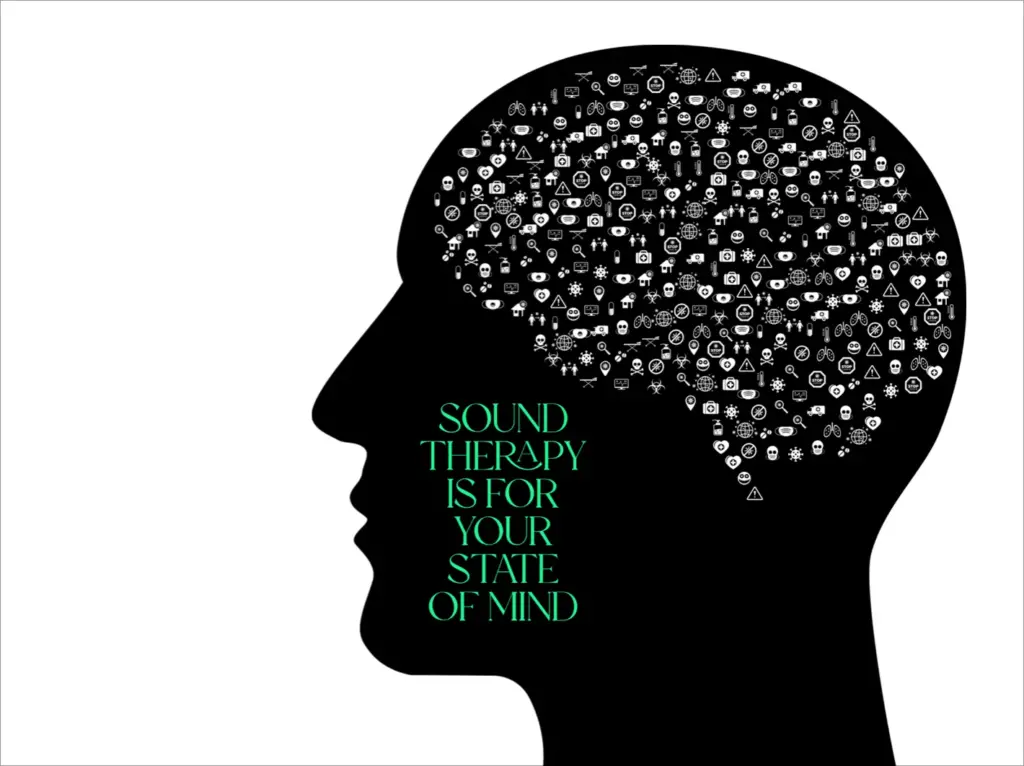In the intricate dance of life, where mind and matter blend, the power of sound stands out as a compelling force. Just as a song can stir memories or emotions, therapeutic sound can affect deeper layers of the psyche, aiding in mental health care. Sound therapists, the choreographers of this harmonious dance, play a pivotal role in this realm.
Let’s dive into understanding their role in helping folks manage their mental health.
Sound Therapy Defined
Before delving deep, let’s first understand sound therapy.
It is a therapeutic practice that employs various sound frequencies to interact with the energy frequencies within our body. Instruments like Tibetan singing bowls, tuning forks, gongs, and the human voice are not just tools but bridges that connect a troubled mind to potential relief.
Mental Health and Vibrational Frequencies
The human brain emits different waves, each corresponding to various states of consciousness. From the high-frequency gamma waves associated with higher cognitive activities to the deep relaxation theta waves, our mental state is intrinsically linked to these frequencies. Mental health disturbances can sometimes be perceived as ‘dissonances’ in these natural rhythms. Using their understanding of frequencies, sound therapists can help realign these ‘out-of-tune’ rhythms.
The Sound Therapist: Beyond the Instruments
While instruments play a role, sound therapists are not mere players. They are:
- Listeners: Before diving into therapy, they listen. Understanding a person’s story, their challenges, emotions, and mental state is paramount.
- Empaths They resonate (pun intended) with their clients, feeling their energies, and tailoring the therapy accordingly.
- Guides: They lead the way, setting the tone (literally and figuratively), helping individuals navigate their mental landscapes using sound as the compass.
Sound Therapy and Mental Health: The Benefits
Sound therapy has been shown to offer numerous mental health benefits:
- Stress Reduction: Stress is a universal modern ailment. Sound frequencies can decrease cortisol, the stress hormone, ushering in relaxation.
- Relief from Anxiety and Depression: Specific sound waves can alter brainwave states, guiding an anxious mind towards calm and lifting the spirits of those feeling low.
- Enhanced Focus and Clarity: By reducing mental chatter, sound therapy can pave the way for clearer thinking and improved concentration.
- Emotional Release: Hidden traumas or suppressed emotions can find a voice through therapeutic sound, allowing for cathartic release and healing.
A Complementary Approach
Sound therapy does not claim to replace traditional mental health treatments but rather complements them. Its non-invasive nature, absence of side effects, and holistic approach make it a promising supplementary therapeutic method.
For instance, a person on medication for depression might find sound therapy accelerates their journey to well-being. Similarly, someone undergoing cognitive-behavioral therapy could discover that sound sessions enhance their introspective abilities.
Case Study: A Shift in Frequencies
Delving into ancient creation myths and cultural practices reveals a fascinating pattern: sound or vibration has always been perceived as an elemental force in the orchestration of matter and the cosmos. These narratives from bygone eras seem to possess innate wisdom, intuitively understanding what modern science is now validating.
According to a research paper from the University of Alabama Huntsville, the significance of vibration to our existence has been illuminated not only by ancient myths but also by contemporary scientific inquiry. The paper underscores the essential role of sound and vibration in the very formation of our universe. It draws parallels between time-tested and modern methods of employing sound and music for healing, emphasizing the transformative power of vibrational therapy.
With the advancement of science, we find echoes of these ancient beliefs being proven. For instance, modern therapeutic practices, harnessing the power of sound and music, can indeed affect profound changes in the human body and psyche. This seamless integration of ancient knowledge with cutting-edge research sheds light on the vast therapeutic potential of sound.
Imagine the prospect of using tuning forks, gongs, or other sound-producing instruments in therapeutic sessions. These tools can introduce individuals to an immersive world of frequencies. Over time, many report a profound connection to their emotions, a clearer understanding of mental patterns, and an overall enhancement in their well-being. It’s a testament to the blend of age-old wisdom and modern sound therapy techniques.
The overarching message of the research is clear: the impact of vibrations for therapeutic use is profound. It offers a promising avenue for healing that, sadly, remains under-recognized in today’s world. The goal is to shine a spotlight on sound and music healing’s potential, urging a broader acknowledgment of its importance. As our society seeks holistic, effective, and integrative therapeutic methods, sound therapy stands out, resonating with the ancient understanding of the universe and the latest scientific findings.
The Road Ahead
As mental health gains prominence in global discourse, the role of sound therapists becomes ever-crucial. Their expertise, understanding of vibrational frequencies, and capability to tailor therapies to individual needs mark them as invaluable allies in mental health care.
While the therapeutic world continues evolving, one thing remains constant: the human need for resonance, both metaphorically and literally. As we navigate the complex terrain of our minds, sound therapists illuminate the path, ensuring we don’t lose our way in the cacophony. So, if you or someone you know is looking for an adjunctive, holistic approach to mental well-being, remember the power that lies in the realm of sound.
It might just be the note you need to strike in your healing journey.







